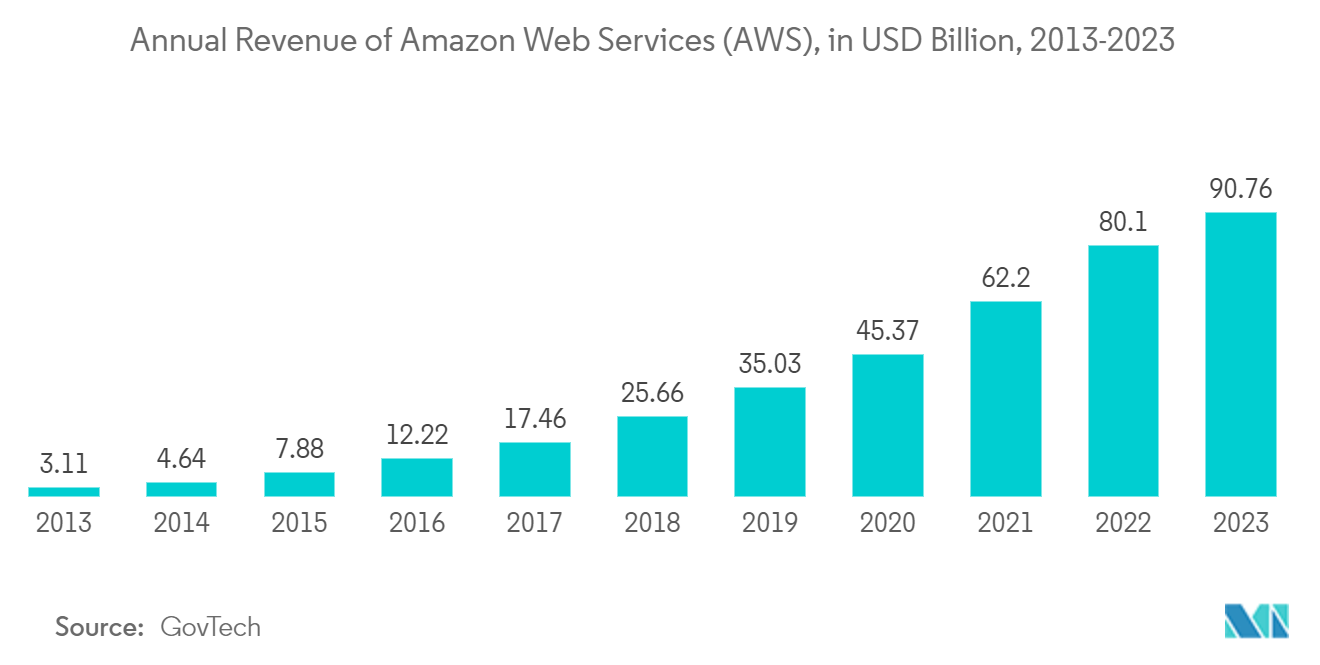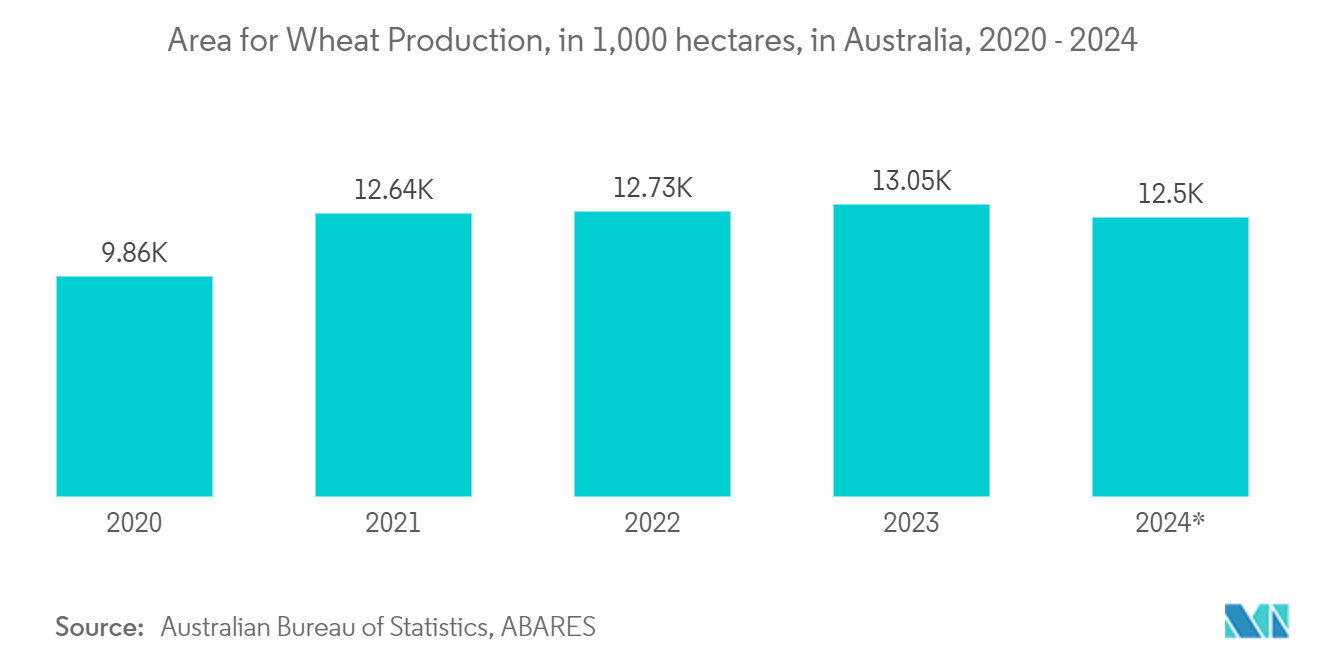Market Trends of Asia Pacific GIS Industry
Cloud Deployment Segment to Hold Significant Market Share
- The increasing realization among businesses in Australia about the importance of saving money and resources by transferring their data to the cloud instead of building and supporting new data storage is causing the need for cloud-based solutions and, therefore, the adoption of on-demand security services in the region.
- The developments in the cloud environment in Australia should create an opportunity for the GIS players in the region to deploy their solutions in cloud servers. For instance, in August 2023, VMware announced that VMware Cloud on Amazon Web Services (AWS) is obtainable in the AWS Asia-Pacific region. This brings the number of regions with VMware Cloud on AWS in Australia to two, including Sydney, and eight across the Asia-Pacific. This expanded presence in Australia will enable more customers to run VMware vSphere-based workloads in consistent hybrid cloud environments, with optimized access to native AWS services, without changing their existing infrastructure.
- Similarly, in October 2023, Microsoft planned to invest AUD 5 billion (USD 3.26 billion) in expanding its hyperscale cloud computing and AI infrastructure in Australia over the next two years, the single largest investment in its forty-year history. This investment will also grow Microsoft’s local data center footprint from 20 sites to 29 spread across Canberra, Melbourne, and Sydney. To realize the full potential of this new digital infrastructure investment, Microsoft is working with TAFE NSW toward establishing a Microsoft Datacentre Academy in Australia.
- Furthermore, recently, ST Engineering announced the launch of GEOEARTH. This cloud-based geospatial analytics platform delivers one-stop and direct access to satellite imagery data and analytics tools that will permit companies to derive renewed insights and accelerate decision-making. Moving away from conventional standalone procedures that are costly, time-consuming, and limited by system capabilities, GEOEARTH’s open platform provides direct streaming access to high-resolution imagery from TeLEOS-1, Singapore’s commercial earth observation satellite, with a suite of data analytics tools. Applications that can help from GEOEARTH include airport processes, business intelligence, monitoring of maritime activities, land-use surveys, and scene-change analysis.

Australia Holds the Largest Market Share
- Australia has a relatively advanced GIS infrastructure with well-developed policies, data, and technology. Over recent years, this infrastructure has been described as the Australian Spatial Data Infrastructure (ASDI), which, to a large extent, works with other National Spatial Data Infrastructures.
- In March 2024, the Geospatial Council of Australia (GCA), the professional body for the geospatial sector, announced a new partnership with Australian Spatial Analytics (ASA), one of Australia's largest and fastest-growing work-integrated social enterprises. This marks a significant milestone for the geospatial sector, with GCA strategically supporting ASA's initiatives through a partnership that leverages their unique strengths and shared values.
- Implementing GIS in agriculture has made it feasible to generate thematic, interactive, and layered maps that apprehend and describe the different realities of the countryside. This includes crop types, cultivated and fallow land areas, boundaries between properties, climatological aspects, irrigation, etc. It also makes it feasible to know in more significant detail the types of soil, the nutrients available in them, the amount of water, temperature, etc. All of this is essential information for making critical decisions for farm management.
- For instance, according to the Australian Bureau of Statistics, in FY2023, the land area utilized for wheat production in Australia amounted to just over 13 million hectares. Wheat production holds the largest land area used for crop production in Australia. Such a vast availability of farmland could create an opportunity for the market to grow.
- Governments use GIS technology to enhance data collection, planning, and service delivery at all levels of government (local, state, and federal). Different levels of government have different responsibilities in other countries, so it isn't easy to define this definitively. State governments use GIS for things like significant road planning and management, construction of assets, health administration, and various types of taxation collection.
- GIS provides spatial solutions to many fields of civil engineering, such as transportation, water resources, facilities management, urban planning, construction, and e-business. GIS is an effective tool for visualizing the topographical conditions of construction sites. The modeling of the construction site facilitates the construction controlling and planning process.


